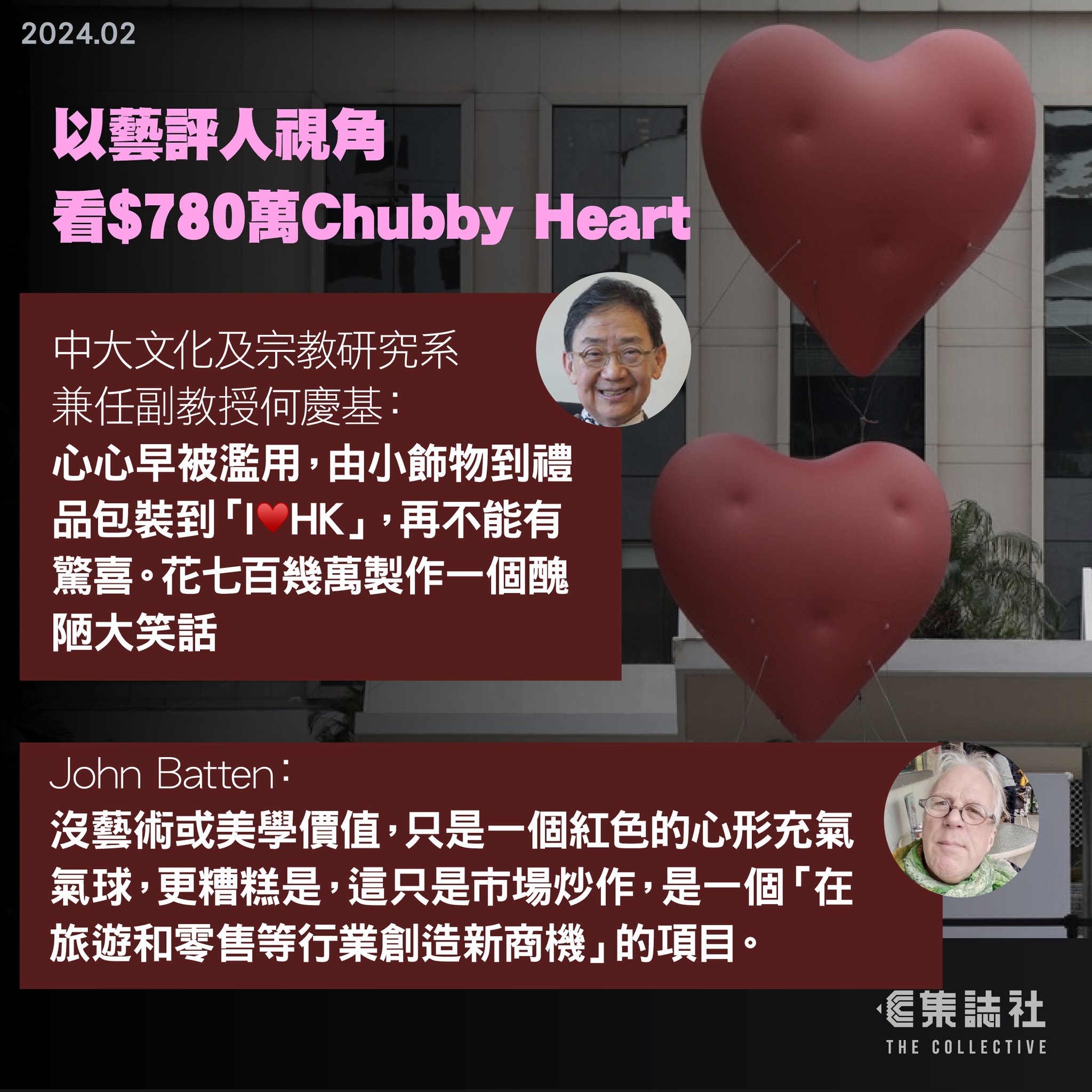藝評
Curating Public Space 何慶基
何慶基 (Oscar HO)
at 1:45pm on 18th April 2024

Image: Commentary headlines about 'Chubby Hearts', published on The Collective website, 26 February 2024.
Curating Public Art
by Oscar Ho
If one thinks that curating art in a public space is the same as displaying art in a gallery/museum, he/she is totally wrong. Not only is the technical requirement in a non-conventional exhibition space complicated, but the displays are subject to wind and rain, and possible limitations of not having enough support and other supplies, such as electricity and security control.
The greatest challenge comes from finding artwork that is meaningful to the public. Unlike museum/gallery visitors, who make an effort to come and see art, and are usually equipped with a certain knowledge, curiosity and willingness to accommodate art they are not familiar with. The viewers of public art could just be walking by, on their way to work, to shop or just for leisure, and they happen to bump into something trying to be ‘art’ on their way. When the artwork in their eyes look superficial or even ‘ugly’, it could violate and disturb their walking experience, especially when they are just passing with no intention to ‘experience Art’.
It’s the responsibility of a public art curator to go beyond the museum aesthetic, as the audience is not a museum visitor. They still need to consider the artistic quality based on their experience and value system, but they also need to expand and consider the attraction, meaningfulness and hopefully open-up some areas of new areas of understanding or awareness for the general public who happen to be walking by. The work needs to be approachable, but it cannot be cheap and overly simple.
The choice of art needs to not only echo the public’s experience, and generate public interest, enlighten understanding and sometimes recollect memories. Take the popular yellow Rubby Ducky at Tsim Sha Tsui about ten years ago, the surprise came from the fact that it was blown-up into an unprecedentedly grand scale, yet it was friendly and could bring back most people’s memories of taking a bath when they were young, or giving their kids a bath with those toys in the tub.
Recently, a public art installation called 'Chubby Hearts' generated much criticism. It is groups of large-scale blown-up (inflated) red hearts installed in different parts of Hong Kong, including commercial and shopping places. A red heart is so commonly used, if not overly used, that using it as a symbol of love can no longer be profound. It is only a waste and use of public space and money. The organizer claims that 200,000 people have seen this work. Such a figure has no meaning. One can put anything on a busy street and get a lot of people to encounter it. Like the Yellow Ducky, it’s the responses from the public, critics, and the arts community that count.
In 2006, I organized a public art exhibition of Taiwan art called < Me 2 > in the garden of City Hall in Central Hong Kong. It included a giant blown-up sculpture and other installations. The entire project, including invitations for artists to fly from Taiwan, the production and the transportation of artwork, cost HK$3 million. Amazingly, this time, just the production and installation of 'Chubby Hearts', one simple artwork, cost the government HK$7.8 million. The organizer better explain that.
